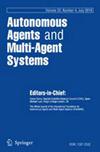Entropy based blending of policies for multi-agent coexistence
Abstract
Research on multi-agent interaction involving humans is still in its infancy. Most approaches have focused on environments with collaborative human behavior or a small, defined set of situations. When deploying robots in human-inhabited environments in the future, the diversity of interactions surpasses the capabilities of pre-trained collaboration models. ”Coexistence” environments, characterized by agents with varying or partially aligned objectives, present a unique challenge for robotic collaboration. Traditional reinforcement learning methods fall short in these settings. These approaches lack the flexibility to adapt to changing agent counts or task requirements without undergoing retraining. Moreover, existing models do not adequately support scenarios where robots should exhibit helpful behavior toward others without compromising their primary goals. To tackle this issue, we introduce a novel framework that decomposes interaction and task-solving into separate learning problems and blends the resulting policies at inference time using a goal inference model for task estimation. We create impact-aware agents and linearly scale the cost of training agents with the number of agents and available tasks. To this end, a weighting function blending action distributions for individual interactions with the original task action distribution is proposed. To support our claims we demonstrate that our framework scales in task and agent count across several environments and considers collaboration opportunities when present. The new learning paradigm opens the path to more complex multi-robot, multi-human interactions.

 求助内容:
求助内容: 应助结果提醒方式:
应助结果提醒方式:


